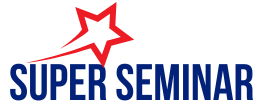In today’s fast-paced business world, juggling multiple software tools can feel like trying to keep a dozen spinning plates in the air. Enter SaaS CRM integrations, the superheroes of the software realm. These integrations swoop in to save the day, effortlessly connecting your favorite applications and streamlining your workflows. Imagine having all your customer data at your fingertips without the headache of toggling between platforms.
Table of Contents
ToggleOverview of SaaS CRM Integrations
SaaS CRM integrations enhance business efficiency by connecting various applications. These integrations facilitate seamless data flow between CRM systems and other essential tools like email platforms, marketing software, and accounting systems. They eliminate the need for manual data entry, reducing errors and saving time.
Many companies utilize SaaS CRM integrations to improve customer relationship management. These integrations allow for real-time updates, ensuring that all team members access the most current information. With an integrated system, companies gain a comprehensive view of customer interactions, leading to better decision-making.
Integration capabilities vary across different CRM platforms. Many offer APIs that allow for easy connections with popular applications. Others provide pre-built integrations, simplifying the setup process for teams. Users can connect CRM systems to tools such as project management software, social media platforms, and e-commerce sites.
Popular SaaS CRM platforms often lead in providing robust integration options. For instance, Salesforce integrates with over 3,000 applications, while HubSpot offers seamless connectivity with numerous marketing and sales tools. This extensive connectivity increases user satisfaction and enhances overall productivity.
Implementing SaaS CRM integrations typically involves a few key steps. Companies assess their existing tools and identify areas of improvement. Next, they select integration solutions that align with their specific business needs. Finally, team training ensures everyone understands how to leverage the new integrations effectively.
SaaS CRM integrations stand out as crucial elements in modern business operations. They streamline workflows, enhance customer insights, and promote better collaboration across departments. By investing in these integrations, companies position themselves for continued growth and success.
Benefits of SaaS CRM Integrations
SaaS CRM integrations offer multiple advantages, significantly enhancing organizational efficiency and customer engagement. Key benefits include enhanced data synchronization and improved workflow automation.
Enhanced Data Synchronization
Enhanced data synchronization occurs when CRM systems connect seamlessly to other business applications. Instant data updates reduce the risk of outdated information, providing teams with accurate insights. Customer data, when synced across platforms, leads to a 360-degree view of interactions. Businesses can respond more quickly to customer needs. Integration ensures that sales, marketing, and support teams all access the same data in real time. This consistency boosts collaboration and trust among teams. Companies leveraging effective data synchronization often report increased customer satisfaction levels.
Improved Workflow Automation
Workflow automation streamlines repetitive tasks, ultimately saving time and resources. Connecting SaaS CRM platforms with other essential applications allows for automated data entry and reporting. This automation minimizes manual errors and frees up staff to focus on more strategic initiatives. Processes such as lead assignments and follow-up reminders can be automated, ensuring timely action. Automating these steps not only increases productivity but also improves response times. Teams can rely on automated workflows to maintain customer engagement, driving better business outcomes. Increased efficiency and consistency often result from implementing effective workflow automation strategies.
Key Features to Look For
Selecting the right SaaS CRM integrations requires careful consideration of key features that enhance functionality and user experience.
API Compatibility
API compatibility stands as a critical feature for seamless integrations. Many successful CRM platforms offer robust APIs. These APIs enable other software tools to connect effortlessly with the CRM system. A strong API allows real-time data exchange, ensuring users access the latest information without delays. Organizations benefit from easily integrating varied applications, such as marketing or customer support software. Furthermore, checking for comprehensive documentation on API support can significantly streamline implementation, minimizing potential hiccups during setup.
User-Friendly Interface
User-friendly interfaces contribute to efficient and intuitive usage. An integration that offers a clean, straightforward design facilitates quicker onboarding of team members. Enhanced accessibility simplifies the process for both tech-savvy and novice users. Ease of navigation allows teams to adopt new tools with minimal friction, leading to improved productivity. Look for customization options that align with specific workflows, enabling better efficiency. A focus on user experience often translates to higher adoption rates within organizations, ensuring employees maximize their use of the integrated systems.
Popular SaaS CRM Integrations
Many businesses benefit from integrating their SaaS CRM systems with other essential tools. These integrations streamline processes and enhance data management.
Salesforce Integrations
Salesforce offers numerous integration options to enhance its CRM capabilities. Popular tools like Mailchimp and Shopify connect seamlessly, allowing businesses to synchronize marketing efforts with sales data. Real-time data exchange enables teams to monitor customer interactions efficiently. Utilizing Salesforce’s AppExchange provides access to thousands of third-party applications, creating endless customization opportunities. Comprehensive API support simplifies connection processes, making it easier for developers to create tailored solutions that meet specific business needs.
HubSpot Integrations
HubSpot also excels in providing effective integrations for CRM functionalities. Key applications like Zoom and Slack work seamlessly with HubSpot, facilitating communication and collaboration among team members. Data synchronization between HubSpot and email marketing platforms streamlines campaign management, ensuring that sales and marketing teams work in harmony. The user-friendly interface allows quick setups, enabling companies to integrate the tools with minimal disruption to daily operations. Custom workflows within HubSpot’s ecosystem further enhance user experience, tailored specifically to align with unique business requirements.
Challenges in SaaS CRM Integrations
SaaS CRM integrations come with significant challenges that organizations must navigate to ensure effective implementation and operation.
Data Security Concerns
Data security ranks high among the challenges organizations face. Sensitive customer information often gets shared between various applications, increasing the risk of unauthorized access. Compliance with regulations, such as GDPR or HIPAA, adds an additional layer of complexity. Organizations must prioritize security measures like encryption and access controls to protect data integrity. Regular audits and vulnerability assessments help identify potential weaknesses within integrated systems. Leveraging established security protocols can instill confidence in customers regarding data handling practices.
Implementation Costs
Implementation costs pose another hurdle for businesses considering integrations. Budgeting for software, technical support, and training adds to the overall investment. Organizations frequently underestimate the resources needed for seamless integration, resulting in unexpected expenses. Additionally, ongoing maintenance costs contribute to long-term financial commitments. Prioritizing clear objectives and assessing the potential ROI from integration can mitigate financial risks. Exploring partnerships with integration specialists might also provide cost-effective solutions while ensuring successful deployment of the CRM system.
Conclusion
SaaS CRM integrations are vital for businesses aiming to enhance efficiency and streamline operations. By connecting various applications these integrations enable seamless data flow and improve customer relationship management. The ability to automate workflows and synchronize data not only saves time but also enhances collaboration among teams.
However organizations must remain vigilant about data security and compliance to protect sensitive information. Careful planning and assessment of integration costs can help mitigate financial risks. By embracing the right SaaS CRM integrations companies position themselves for growth and improved customer satisfaction in an ever-evolving market.




